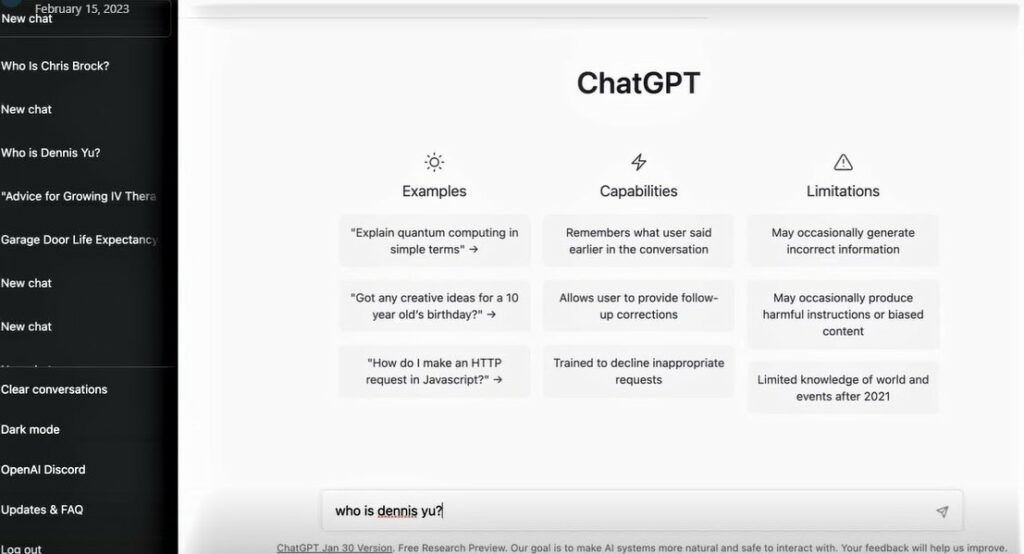Table of Contents

Are you one of those people who are skeptical about trekking the path of applied Science?
Perhaps, your concern lies in the social and economic pressures induced by new technologies.
Understandably so, even Bill Gates does not understand why people are shockingly undaunted by the emerging AI technology of today.
Should there really be a cause for apprehension?
It depends on your immediate game plan and how you look at things 6 months from now.
Arguably, the most popular AI tool storming the internet nowadays that’s got tech giants clashing is the ChatGPT. It’s a human-like text generator with an expansive language model for your heavy-going content.
Right now, people are using this platform to get ahead of the competition and get more work done.
With your smart commands, you can ask ChatGPT to write cover letters, blog posts, solve mathematical problems, build videos, and even get relationship advice.
If you think about it, it seems like AI possibilities are endless. Yet, there’s one thing that robots can’t do. They don’t have our EXPERIENCES or our RELATIONSHIPS.
When you have the experiences, and you mix them together with ChatGPT, it’s amazing. From a prompt standpoint, it can help you create ideas, a framework, questions, and headlines into which you inject your experiences. Then you have real stories that the robots don’t have.
And if you haven’t noticed, Google made a change. It used to be EXPERTISE, TRUST, and AUTHORITY until they added an extra E for EXPERIENCE.
Why did they do that?
It’s critical for all of us to understand that they added “experience” because they knew that people would use AI bots to start generating stories and articles.
Nonetheless, with cybersecurity, you can still easily spot ChatGPT because it’s not using real stories, pictures, and videos.
So, when you sprinkle in your story about how you feel and what you’ve done with other people and embed that in there, the robot is no longer a competitor.
The robot is only an enhancer. It’s an amplifier of what you already have.
So, instead of using it to fool Google, think about how you can use AI to make your work nicer.
For example, I got to interview Kevin Harrington, a world-class professional public speaker.
We were both at a conference, and when I took our authentic moments together, the pictures, voice, and the words he says in the text don’t work very well for a book.
In such a case, we can use ChatGPT and command it to make use of the materials that I have and make it fitting for a published book. You can say, dumb it down, or condense the five main points of this raw content.
The AI could write the outline. It could also write great chapters on certain subjects.
Ask Better Questions to Get Better Answers
This concept is weird because we’re asking questions about questions. But this is how you use these AI tools.
For example, I’ve got a friend named Cheryl Catel. We’ve known each other for 26 years, back when she still ran marketing at Travelocity.
So, we hung out in Disneyland and took tons of pictures. It was great, and now I have all of it documented.
But if I ask ChatGPT, who Cheryl is, it can’t probably tell me anything. There’s just so little information about her that ChatGPT could work on.
Back then, the relationships and work that she had were offline. They were never captured online.
So, the world wide web doesn’t know who she is, and probably multiple people share her name.
But you could say more about who she is so that the AI can respond better.
My point is you have to capture moments because these moments that are being captured will be picked up by the AI.
Looking into the Future
I’m not thinking about what ChatGPT is doing today. I’m thinking ahead. Where do I need to be properly positioned six months from now or a year from now?
Constantly ask yourself what you need to have ready now so that when all this other stuff is ready in six months, you can be prepared for the AI.
To put that into perspective, Suzanne, my housekeeper, wants to sell soaps and work from home at the same time. You know, just because you’re good at making soaps doesn’t mean you have a business. So, what I did is that I made a video for it.
Imagine if the AI is able to ingest all of that, what if then I told it at the prompt, to build a website and Shopify where Suzanne can sell these soaps? And ask the AI what price to sell the items or what sort of soaps should be made.
This is where it gets scary when you get a multiplying effect because ChatGPT and these other tools can come up with ideas. But right now, it’s just text that can create videos, so we don’t have to make 10 different videos.
AI in General
AI, in general, isn’t very vertical. You can ask it to do whatever you want. You need to merely speak to it.
That said, the real power of AI is in the underlying engine. For anyone who tries to put a name on top of it, there’s an interface between the engines.
This is one of the main reasons why people love the iPhone, even nine-month-old kids can use it because they don’t need to go through a three-hour long training.
A technology that’s sophisticated is indistinguishable from magic. It’s not human, but it can answer questions in the cleverest kind of way.
The Power of the Content Library
The ability to import larger chunks of information is increasing. That’s why I believe that whoever has the strongest content library is going to have a huge advantage because it gives the strongest seed base of AI to be able to work with.
It captures the tone and voice, giving the AI plenty of information.
But right now, you still have to use six or seven different tools to try to make things work properly. But it’s going to start combining all of the following stages eventually.
· It’s going to extend the breadth of everything.
· It can crawl so the rest of the internet can be in real-time.
· Generation of media in any format
· Build applications so it can build WordPress plugins.
· UBI (Universal Basic Income)
Among these many stages, the scariest aspect is the UBI which is a guaranteed basic income in a clear attempt to reduce the gap between the rich and the poor.
What’s terrifying about it is the socio-economic implication of AI tools. When robots are so smart, 80 percent of people are going to be unemployed. Not because we’re lazy, but because if you ever need an Uber, there will be no Uber driver because the thing is going to drive itself.
To tell you a story, I went to McDonald’s in Sydney. There was this giant glass cube-like you can almost see through it, and there weren’t humans in there. It was robots that were making all the things.
All the machines are doing it. You press the pictures on the screen of the cheeseburger and French fries. It will send the order up to the top floor, and then your order would just come down in one of the shoots and drop in front of you.
Ai is moving so fast, but the bigger point is that we’re a step ahead of everybody else.
The API Line
Have you heard about the API line? Or what’s it like living above or below the API Line?
Imagine this line in your house that’s flooding, and the water level is going up and up.
API line is the current level. You know Alexa, and Siri, are built to be intentionally dumb because if Alexa revealed how smart she is, you would not let her listen to your conversations.
Why do you think Google’s logo is all playful, and colorful kindergarten colors?
It’s because when you see a cartoon, you think it’s kind of fun. You don’t realize that behind the cartoon is something raging.
If you knew how powerful Google was, you would be careful about what you put into that thing. The tech guys know this, that’s why they’ve made it seem like it’s a plaything.
Case in point, the majority of jobs are below the API line. Some of these jobs are Uber drivers, food runners, and truck mechanical workers.
The emergence of AI tools like Alexa and Google makes working below the API line a dead end. And the API line is moving so fast that it’s just swallowing up all these different jobs without us even noticing.
Will it eventually eat all the jobs? What are the jobs that are protected from this AI surge?
There are two safe jobs that even AI robots cannot overtake. One is the people programming the robots. Second, the people who engage in relationship-oriented job roles like therapists or certain kinds of consultants.
The areas that are very top of the API line are where the robots can’t do the human-level kind of thing.
That’s how we grow our brand.
We upload everything to AI and understand that it works for us instead of we work for it.
